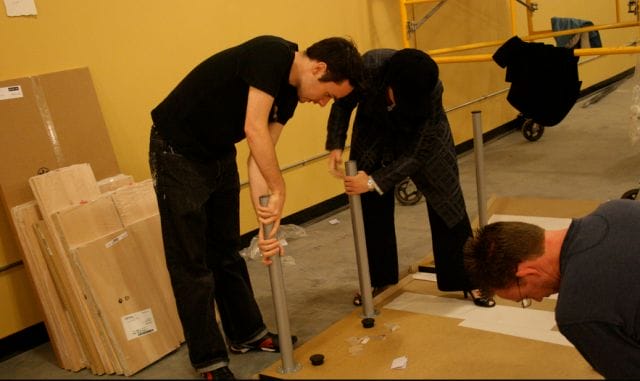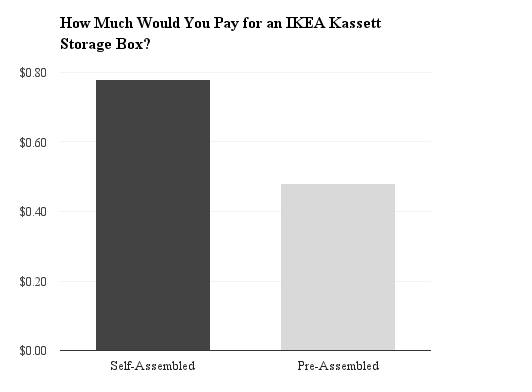
Photo by Tara Hunt
You probably love complaining about how annoying it is to assemble IKEA furniture. But do you actually secretly get satisfaction from putting the furniture together on your own?
A 2011 experiment from the Harvard Business School sought to explore exactly that– do we value do-it-yourself projects differently from products that already come assembled?
In this study, psychologist Michael Norton had one group assemble a Kassett storage box from IKEA. The other group was simply given a pre-assembled Kassett. He then asked each group how much they would be willing to pay for the box (the most they could pay was $1.00). In case you’re wondering, this is what these boxes look like:

Source: “I Heart Organizing” Blog
For something as simple as a box, they do require a few more steps than we expected. Participants were given a 5-step instruction manual (courtesy of IKEA) to guide them along the way.
Norton found that the people who assembled their Kassetts valued the boxes much higher than those who were given one pre-assembled:

Data via Harvard Business School
While the mean valuation in the pre-assembly group was $0.48, the self-assembly group averaged a 60% higher valuation ($0.78). Norton dubs this the “IKEA Effect”–
“… the consumers’ increased valuation for goods they have assembled when compared to objectively similar goods not produced by the self.”
It appears that people value products more if they make it themselves. But this assumes successful completion– surely there are many instances of people giving up on self-assembly, storming off in a huff.
So in a similar experiment, Norton wanted to see how completion (or lack thereof) would affect valuation. He had one group assemble a Kassett box, while the other group had to stop assembly on the penultimate step– leaving it incomplete.
Successful assemblers valued the Kassett much higher than those who didn’t get to finish:

Data via Harvard Business School
Norton got similar results in separate experiments involving origami and Legos. Even in these, participants highly valued things they made themselves, but only if they were successfully completed.
What psychological impulses cause the IKEA Effect? According to Norton:
“… the increase in liking that occurs due to effort coupled with the positive feelings of effectance that accompany successful completion of tasks is an important driver of the increase in willingness to pay that we observe.”
In other words, labor leads to love. Sometimes. Spending an hour or two putting together a bed frame might leave us with a sense of pride. Maybe IKEA makes the instruction manuals so confusing on purpose so we love the fruits of our labor even more?
To get occasional notifications when we write blog posts, sign up for our email list.



